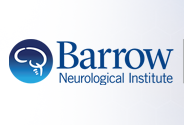Outcome after conservative or surgical treatment for new-onset epilepsy in children with cerebral cavernous malformation
Document Type
Article
Abstract
OBJECTIVE: This study aimed to investigate and compare the outcome of conservatively or surgically treated children with cerebral cavernous malformation (CCM) and new-onset CCM-related epilepsy (CRE) during a 5-year period. METHODS: In this observational monocentric cohort study, data were collected ambispectivley. Our database was screened for CCM patients treated between 2003 and 2020. Patients ≤18 years of age with complete magnetic resonance imaging dataset, clinical baseline characteristics, and diagnosis of new-onset CRE were included. Definite seizure control was classified as International League Against Epilepsy class <2. Functional outcome was assessed using the modified Rankin Scale score. CRE patients were separated into two groups according to their treatment modality. Seizure control, intake of antiseizure medication, and functional outcomes were assessed. Systematic literature research was performed to identify other cases of new-onset CRE in children and to compare the collected data with published data. RESULTS: Thirty-nine pediatric CRE patients were analyzed. A total of 18 (46.1%) patients were conservatively treated, while 21 (53.8%) underwent surgical CCM removal. While the functional outcome was similar in both groups at the last follow-up, definite seizure control was better in the surgical group (77.8%) than in the conservative group (25.0%) both after 5-years of follow-up (p = 0.038), and at last follow-up with 85.7% versus 50% respectively (p = 0.035). We found substantially higher rates of discontinuation of antiseizure medication at the last available follow-up in patients undergoing surgical resection (p = 0.009). The systematic literature review identified 4 studies with a total of 30 additional children with early onset CRE. CONCLUSION: Surgical treatment of pediatric patients with new-onset CRE had higher rates of complete seizure control and early discontinuation of antiseizure medication than conservative treatment. Neurological outcomes of patients managed surgically or conservatively were comparable. These results encourage early surgical management of children with CRE even in the absence of pharmacoresistant epilepsy, but randomized control trials are urgently needed for further decision-making.
Publication Date
10-1-2023
Publication Title
Seizure
E-ISSN
1532-2688
Volume
111
First Page
23
Last Page
29
PubMed ID
37494759
Digital Object Identifier (DOI)
10.1016/j.seizure.2023.07.011
Recommended Citation
Santos, Alejandro N.; Rauschenbach, Laurèl; Riess, Christoph; Georgiades, Iason; Fiçilar, Berrin; Gallardo, Enrique G.; Quesada, Carlos M.; Li, Yan; Tippelt, Stephan; Dohna-Schwake, Christian; Schmidt, Börge; Jabbarli, Ramazan; Siegel, Adrian M.; Benet, Arnau; Wrede, Karsten H.; Sure, Ulrich; and Dammann, Philipp, "Outcome after conservative or surgical treatment for new-onset epilepsy in children with cerebral cavernous malformation" (2023). Neurosurgery. 2139.
https://scholar.barrowneuro.org/neurosurgery/2139


